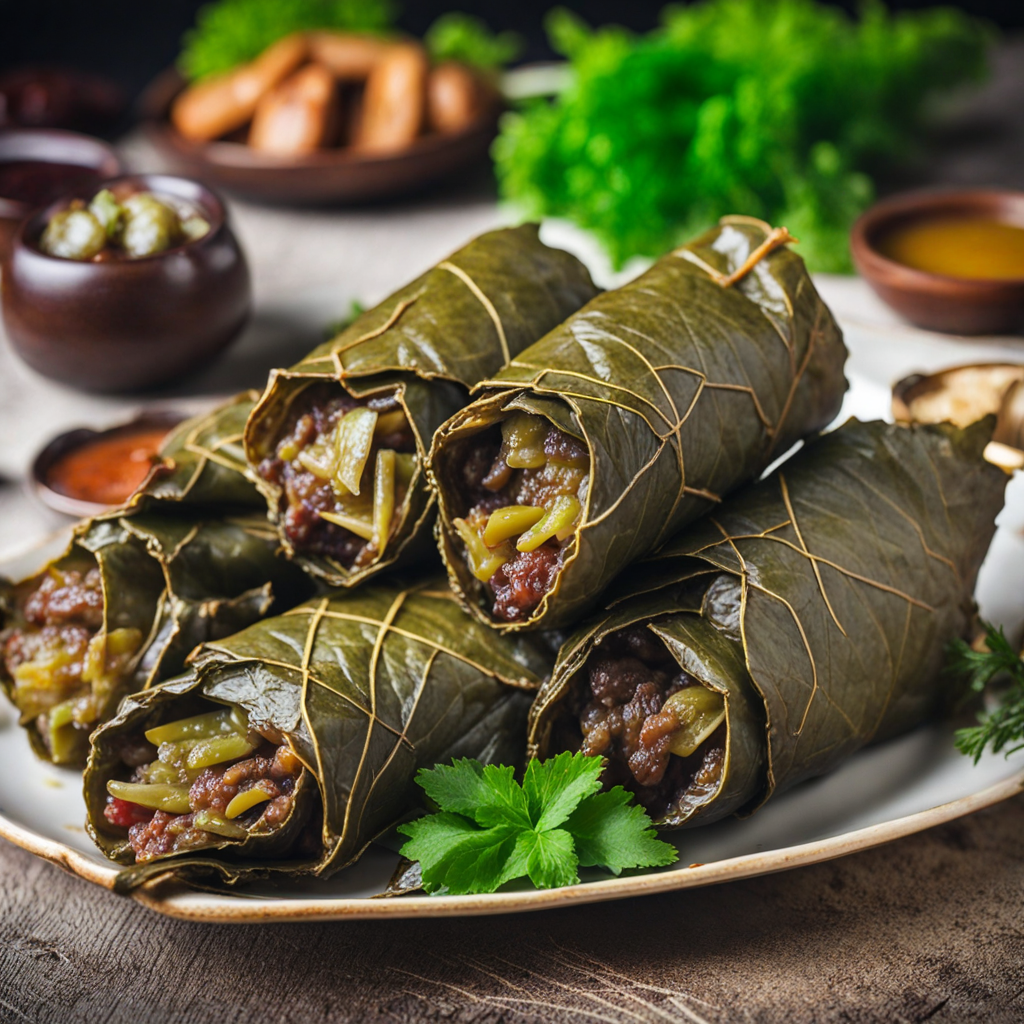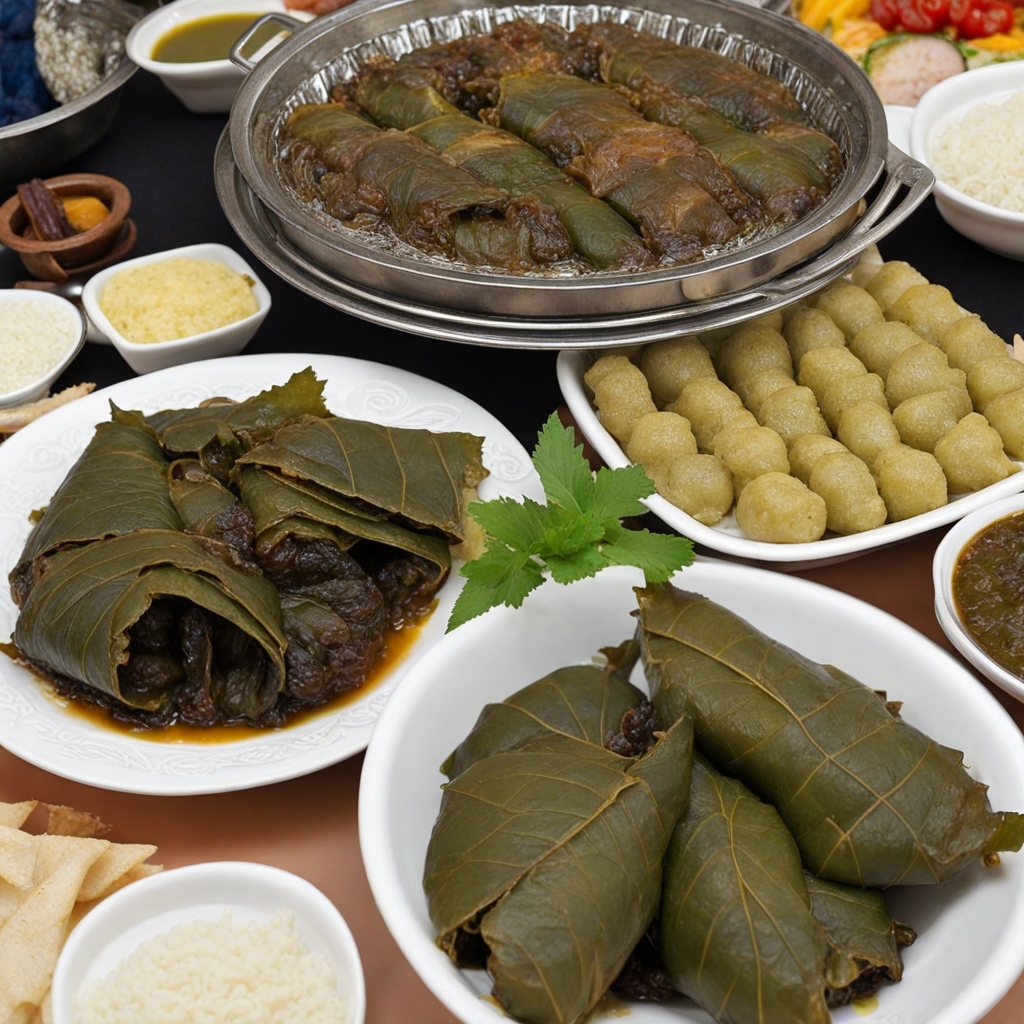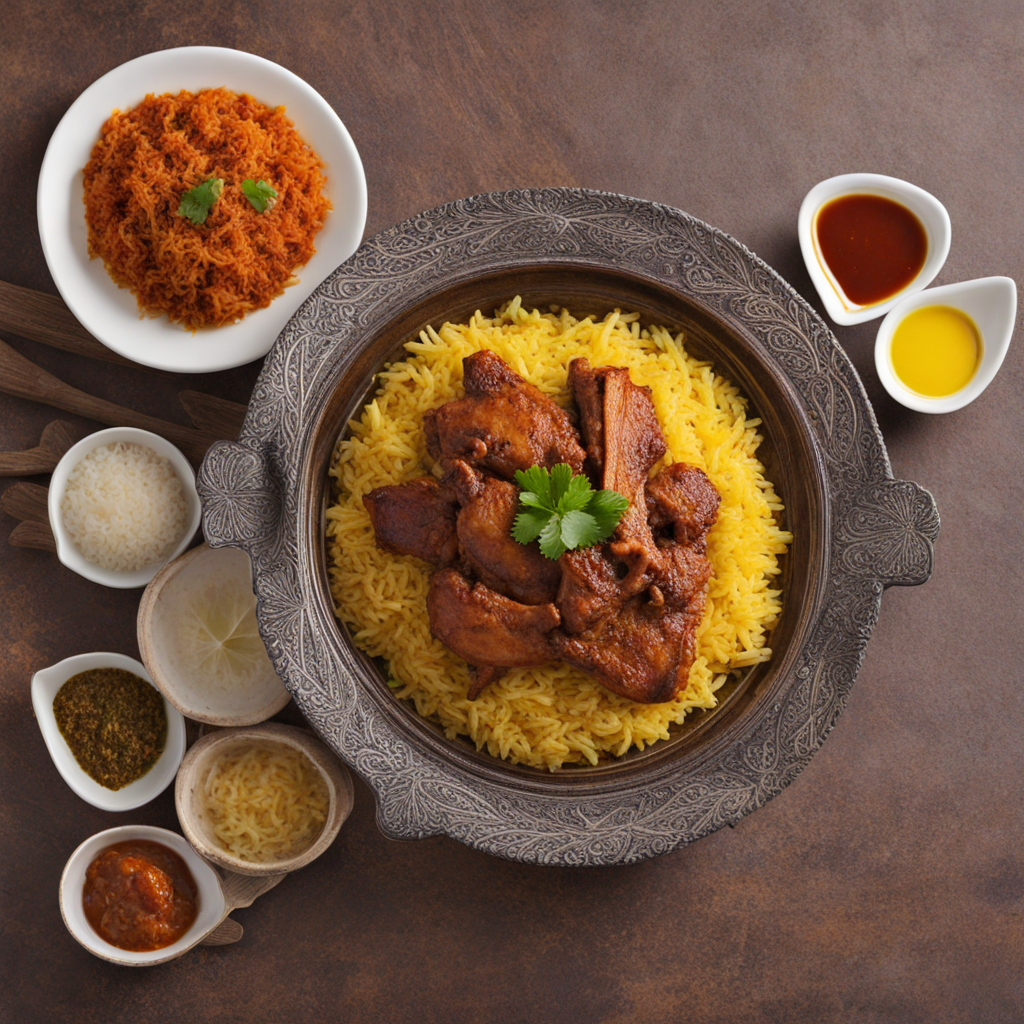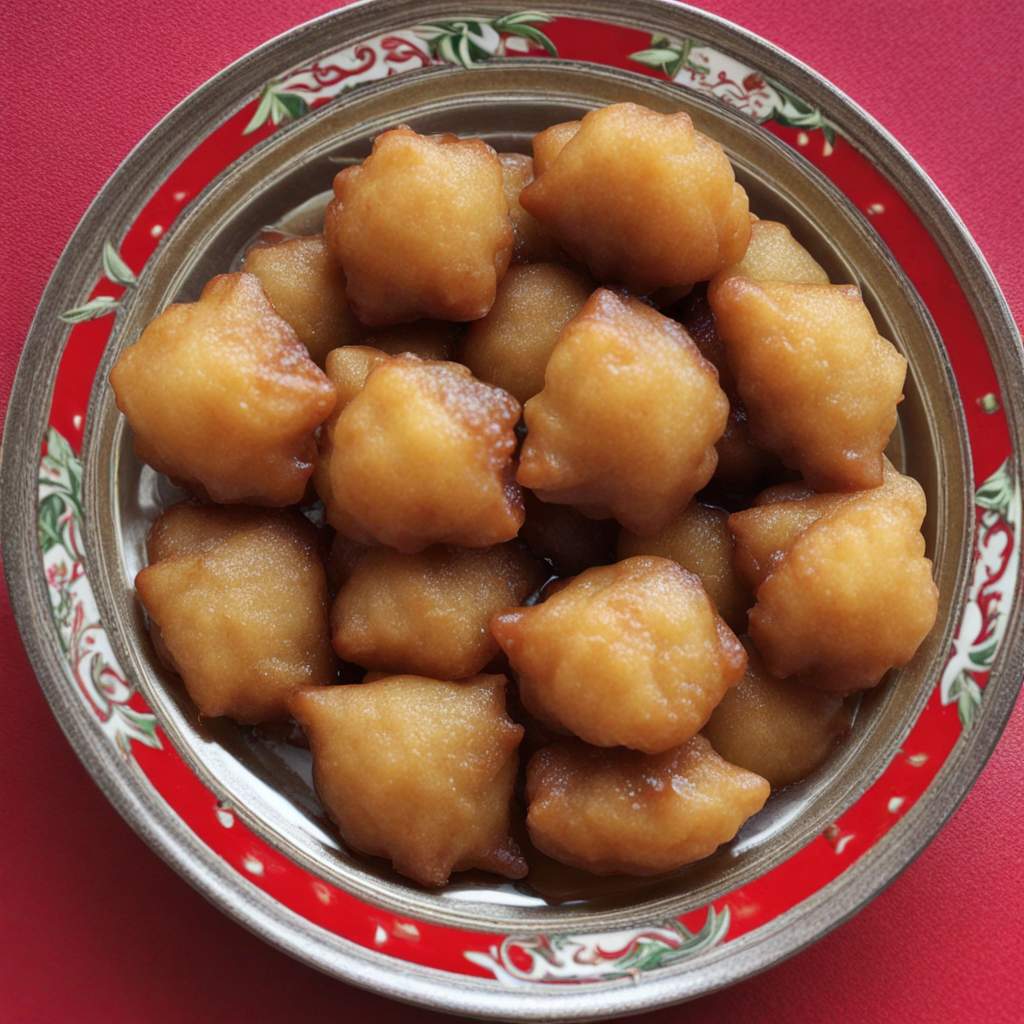Warak Enab
Warak Enab, a beloved dish from Qatar, features tender vine leaves stuffed with a delightful mixture of rice, minced meat, and an array of fragrant spices. The leaves are meticulously rolled, creating neat little parcels that are both visually appealing and full of flavor. The combination of rice and meat is often enhanced with fresh herbs like parsley and mint, which add a refreshing note to the dish. The intricate preparation process not only showcases the culinary skills involved but also reflects the rich cultural heritage of the region. The dish is typically simmered in a tangy sauce made from tomato and lemon juice, infusing the Warak Enab with a zesty flavor that balances the richness of the filling. As they cook, the vine leaves soften, allowing the flavors to meld beautifully, creating a succulent bite that bursts with taste. Each roll is a small treasure, offering a unique blend of textures, from the tender leaves to the savory filling, making every bite a delightful experience. Warak Enab is often enjoyed as an appetizer or a side dish, and it pairs wonderfully with yogurt or a side salad, enhancing the overall dining experience. This dish is not only a staple in Qatari cuisine but also a popular choice in various Middle Eastern countries, each offering its own twist. For anyone looking to explore new flavors, Warak Enab is a must-try, promising an adventure in taste that beautifully captures the essence of Qatari culinary traditions.
How It Became This Dish
The History of ورق عنب (Warak Enab) in Qatar Introduction Warak Enab, or grape leaves, is a beloved dish in the Middle East, particularly associated with the culinary traditions of Qatar and other Arab nations. This dish, composed of vine leaves stuffed with a mixture of rice, meat, and spices, holds not only a place in the hearts of those who savor it but also a rich narrative that reflects the region's agricultural practices, cultural exchanges, and evolving culinary identities. Origins and Early Development The origins of Warak Enab can be traced back to ancient civilizations in the Mediterranean region. The cultivation of grapevines dates back thousands of years, with evidence of viticulture found in archaeological sites across the Levant, particularly in modern-day Lebanon, Syria, and Palestine. Ancient Egyptians also recognized the value of grape leaves, using them in various culinary applications. As trade routes evolved, so did the exchange of ingredients and cooking techniques. The Romans, who were known for their sophisticated culinary practices, contributed to the spread of grape cultivation throughout their empire. This movement of agriculture and cuisine laid the foundation for dishes that would later become staples in the Mediterranean and Middle Eastern diets. In the Arabian Peninsula, grapevines found a suitable climate, and the local populations began to adopt and adapt the practice of stuffing vine leaves. The dish became a means of preserving seasonal harvests, particularly during the summer months when fresh produce was abundant. The stuffing itself varied, often reflecting local tastes and the availability of ingredients; it could include rice, minced meat, herbs, and spices, creating a dish that was both flavorful and nourishing. Cultural Significance in Qatar In Qatar, Warak Enab is much more than just a dish; it embodies the spirit of hospitality and community. Traditionally served during family gatherings, celebrations, and religious feasts, the preparation of Warak Enab is often a communal activity. Families come together to roll the vine leaves, share stories, and bond over the cooking process. This communal aspect transcends mere food preparation; it fosters connections among family members and friends, strengthening social ties. During the holy month of Ramadan, Warak Enab takes on an even more significant role. It is often served as part of the iftar meal, breaking the fast after sunset. The dish's rich flavors and hearty ingredients provide sustenance after a long day of fasting, while its presence on the table evokes a sense of tradition and belonging. In this context, Warak Enab becomes a symbol of abundance and generosity, reflecting the values of sharing and community that are central to Qatari culture. Evolution of the Dish As Qatar has undergone significant transformation in recent decades, particularly with its rapid development and modernization, the culinary landscape has also evolved. While traditional dishes like Warak Enab remain popular, their preparation and presentation have adapted to contemporary tastes and lifestyles. In urban centers like Doha, restaurants have begun to offer Warak Enab with modern twists, incorporating fusion elements that reflect the country's diverse population. For instance, some chefs experiment with different fillings, using ingredients such as quinoa, lentils, or even seafood, catering to a wider array of dietary preferences. Additionally, the presentation of the dish has become more sophisticated, often served with complementary sauces and garnishes that elevate its visual appeal. Despite these changes, the essence of Warak Enab remains intact. Home cooks still cherish traditional recipes passed down through generations, ensuring that the cultural legacy is preserved. Cooking classes and culinary workshops focusing on traditional Qatari cuisine have also emerged, allowing younger generations to learn the art of making Warak Enab and other local dishes. This resurgence reflects a broader trend of cultural preservation, where the younger populace seeks to reconnect with their heritage amidst a rapidly changing world. Regional Variations and Influence While Warak Enab holds a special place in Qatari cuisine, it is also a dish with numerous regional variations across the Middle East. In Lebanon, for example, Warak Enab is often made with a sweet and sour filling, incorporating pomegranate molasses, while in Turkey, it may include pine nuts and currants. Each region's unique take on the dish reflects local agricultural practices, cultural influences, and historical contexts. The influence of Warak Enab has also extended beyond the Middle East. As migration patterns have shifted over the years, many Qatari expatriates have taken their culinary traditions with them, introducing Warak Enab to new audiences around the world. In cities with significant Arab populations, such as London, Paris, and New York, Middle Eastern restaurants feature Warak Enab on their menus, allowing a global audience to experience this cherished dish. Conclusion Warak Enab is a culinary masterpiece that encapsulates the richness of Qatari culture and the broader Middle Eastern gastronomic heritage. From its ancient origins in the Mediterranean to its modern-day adaptations in urban settings, the dish illustrates the dynamic interplay of tradition and innovation. As Qatar continues to evolve, Warak Enab remains a testament to the enduring power of food as a vehicle for cultural expression and community bonding. In a world that is increasingly globalized, the significance of Warak Enab is not just limited to its taste but extends to the stories and memories it evokes. It serves as a reminder of the importance of family, hospitality, and the shared experiences that unite people across generations and geographical boundaries. Whether enjoyed in a bustling restaurant or a cozy family kitchen, Warak Enab continues to be a symbol of togetherness and a celebration of culinary heritage in Qatar and beyond.
You may like
Discover local flavors from Qatar







